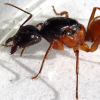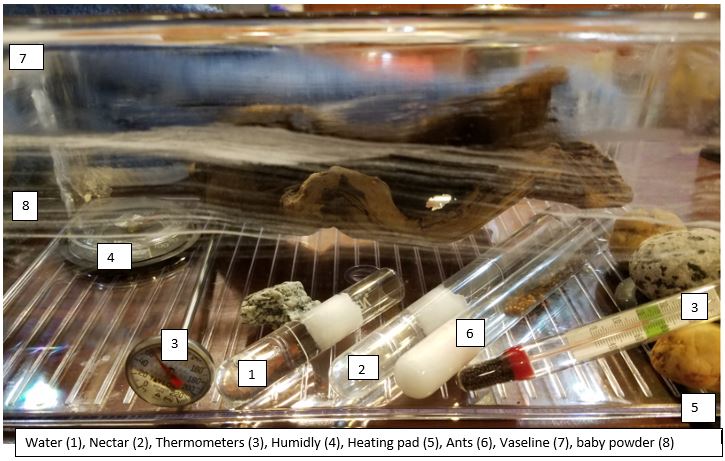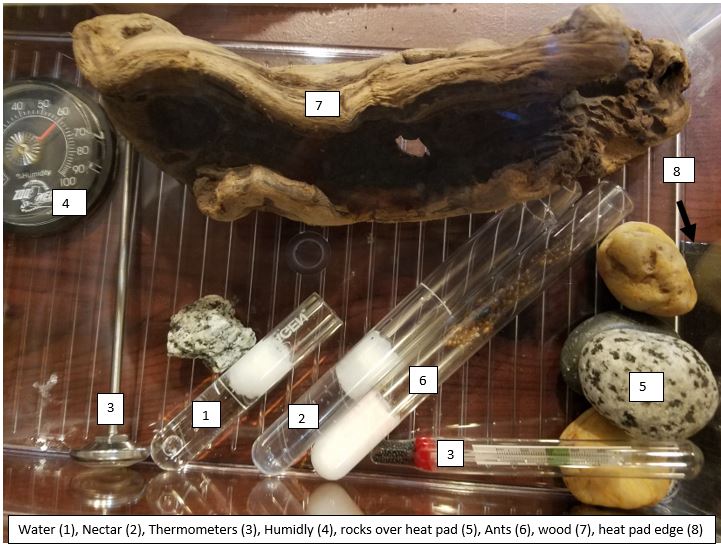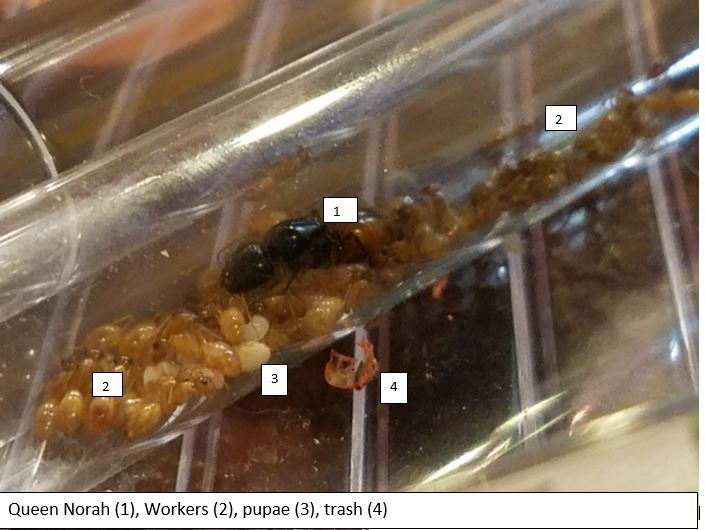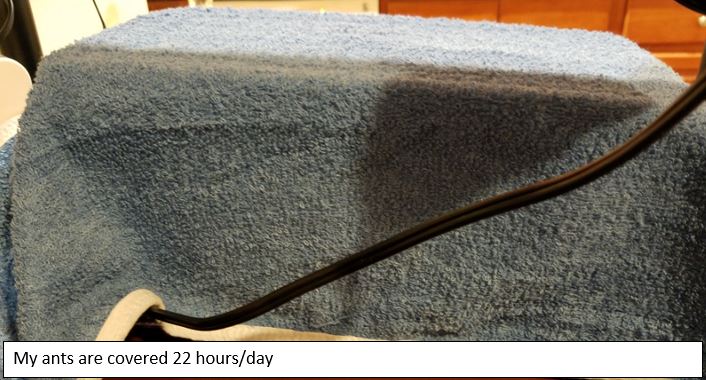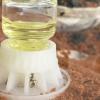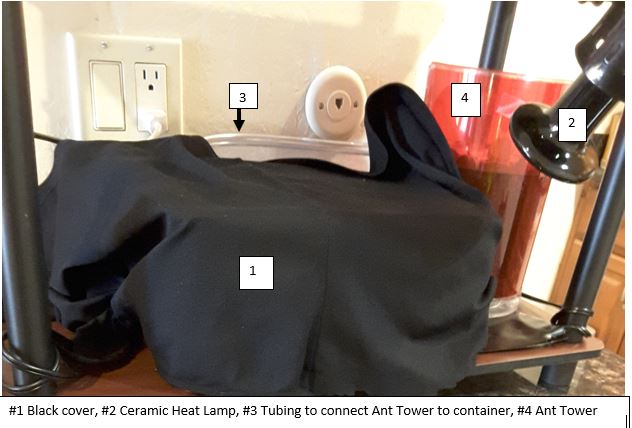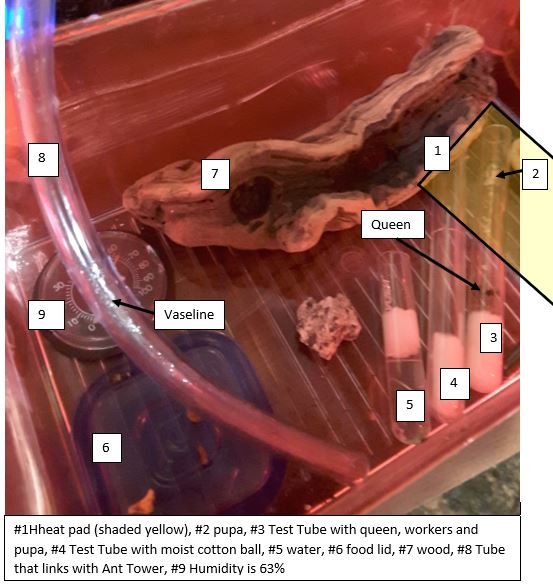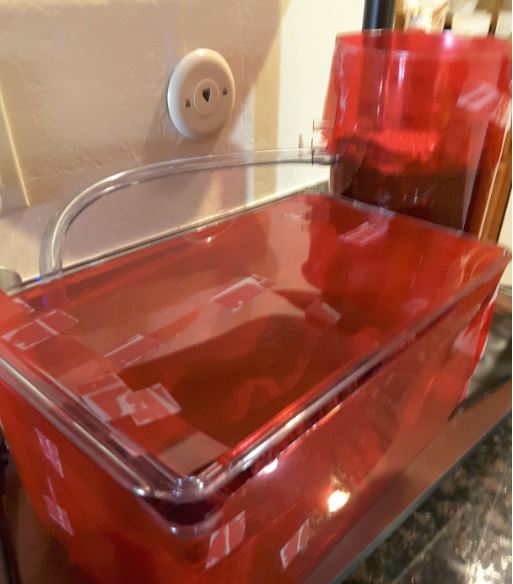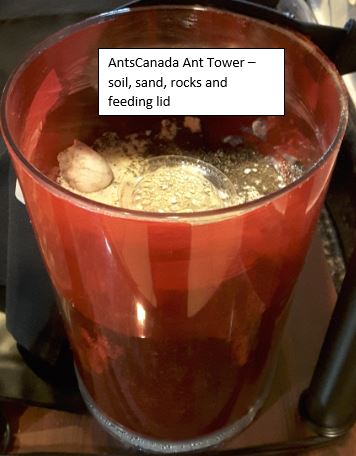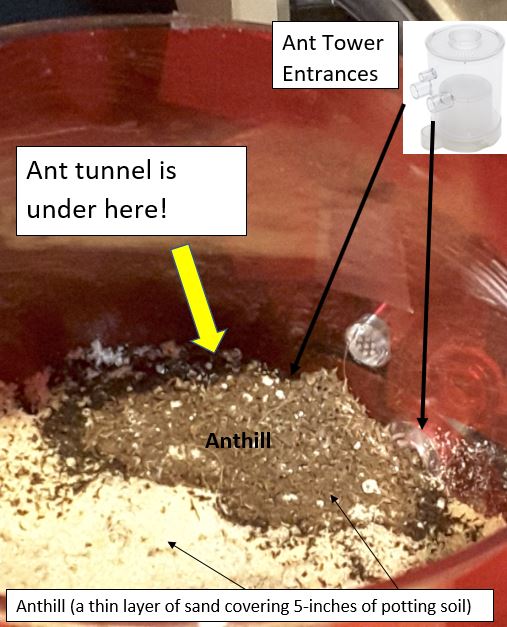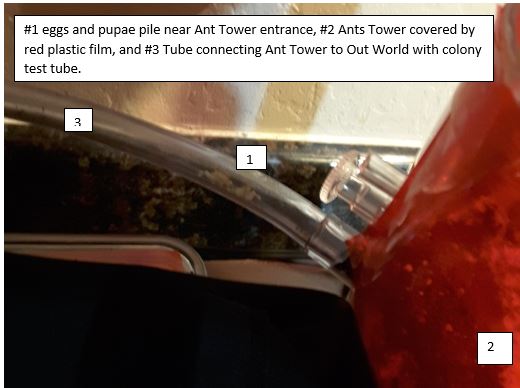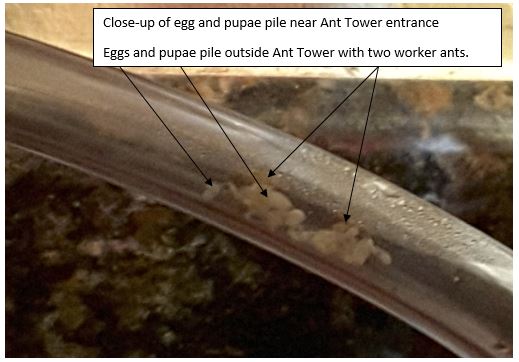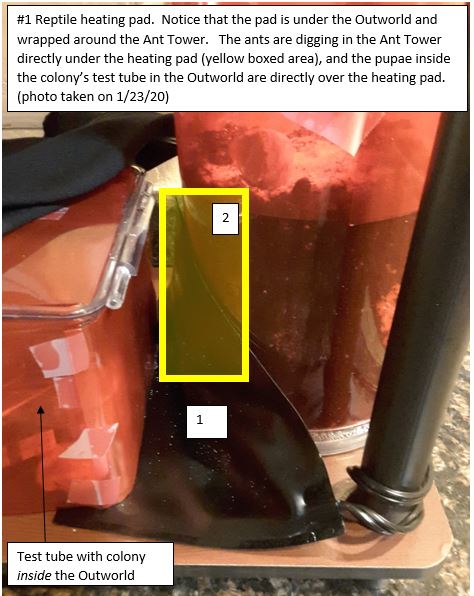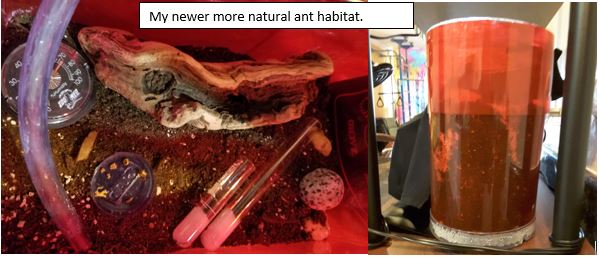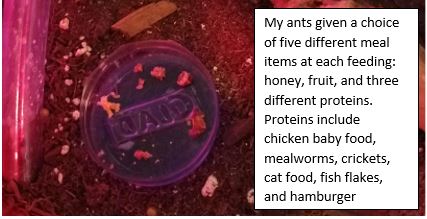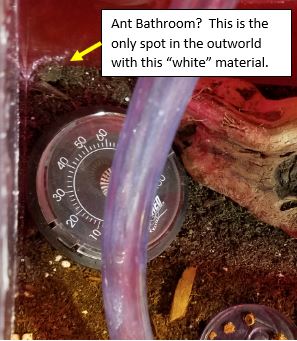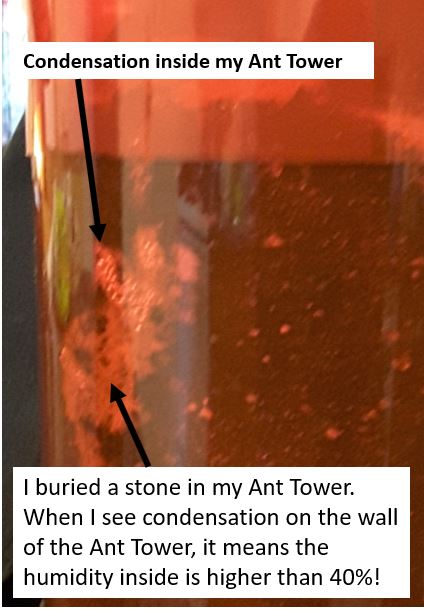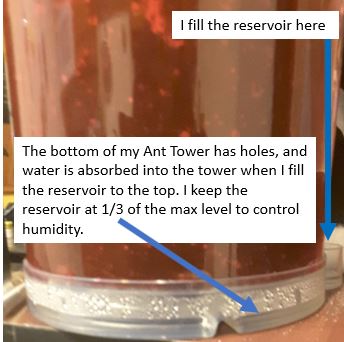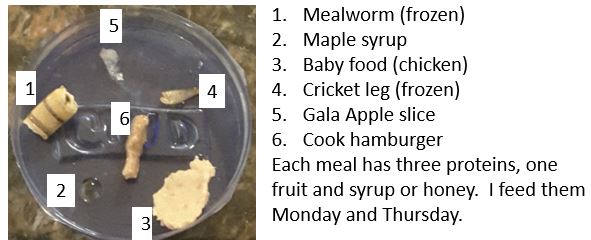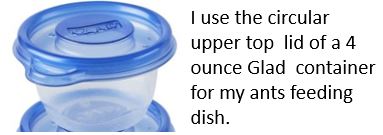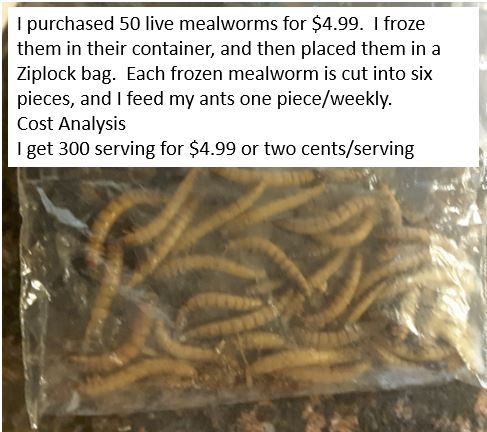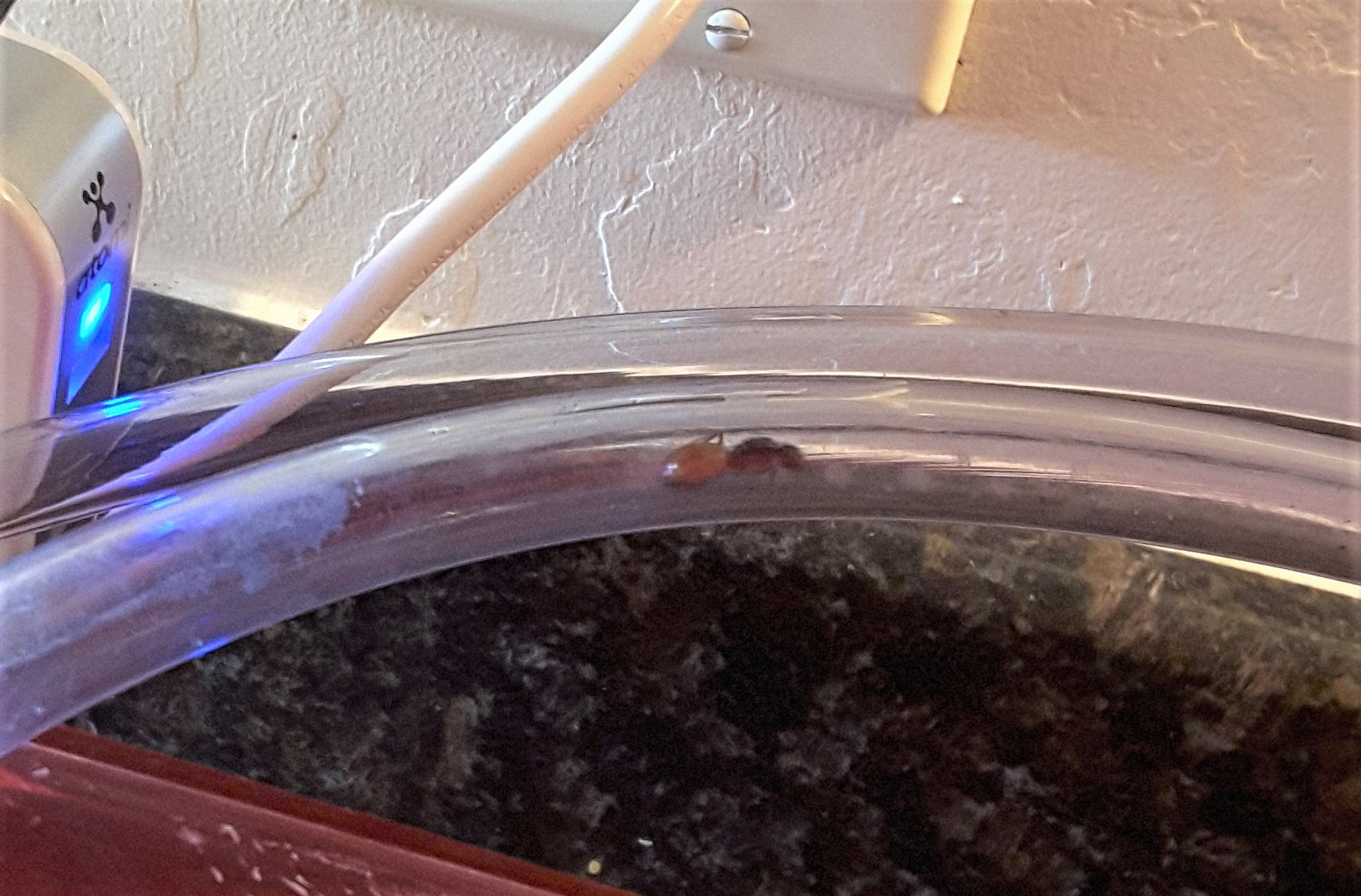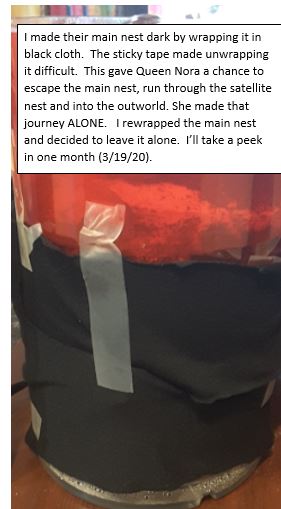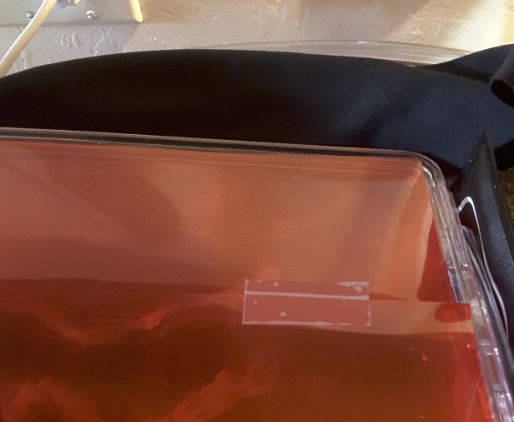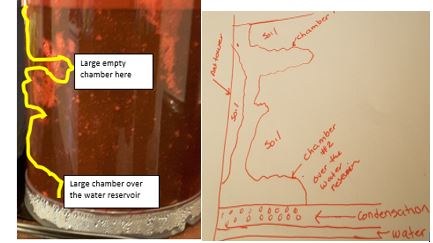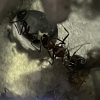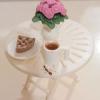Research Results on Humidity
Camponotus ants prefer to nest in spots with 20% to 40% humidity. I will assume that whenever I see condensation along the inner wall of my tower, the soil humidity is approximately 100%.
I’ve done the following to reduce the humidity in my ant tower:
1. Use PTFE along the upper edge of my outworld and ant tower to prevent ants from escaping. (PTFE is superior to Vaseline or baby powder)
2. Remove the lids from my ant tower and outworld.
- Mistake 1: I initially closed the lids on my ant tower and outworld. I saw condensation pockets in the ant tower’s soil, and on the walls and cover, and the humidity in my outworld climbed to 80%.
3. Keep the water reservoir at the bottom of my ant tower at 1/3 full. As long as the water does not touch the bottom soil layer in my tower, capillary action will be significantly reduced, and the humidity will also be reduced.
- Mistake 2: I initially completely filled the reservoir, and I saw condensation in soil gaps throughout the tower, and the worker ants moved the brood out of the ant tower and into the tubing near the tower's entrance. The workers returned their brood to the tower a few days later when the humidity decreased.
4. Never add water to the top of the tower because that increased the humidity inside my nest.
- Mistake 3: I used a pipet to add drops of water to the topsoil of my nest because I never saw my ants drinking from their test tubes. The day after I added water to my ant tower, the workers had moved the pupae and eggs out to the ant tower and into the adjacent tube connecting the outworld to the ant tower.
Nightly Ant Migration from the Ant Tower to the Tube Connected to the Outworld?!
I've seen workers and brood in the tube leading to the outworld in the morning about five to six days a week. It is always a few workers and a pupae pile never the queen and eggs. I know that day and night temperature fluctuations in my home trigger humidity fluctuations inside my ant nest. Cold temperature increase humidity and warm temperatures decrease humidity. I've found workers and brood (never the queen) in the tube leading out of the ant tower when I check on them in the morning. In the middle of the afternoon, the workers usually carry the pupae back into the ant tower. This happens almost every morning.
Last night (2/9/20), I got up at 2 am to get a drink and peeked under my ant cover. I saw the queen, workers, and brood in the tube leading from the ant tower. The queen ran into the ant tower, and the workers (carrying the eggs) quickly followed. I don't know if they do this every night or if I caught them moving back into their old test tube in the outworld.
At night my home's temperature drops to 590 F. I think low nighttime temperatures increase the humidity in my ant nest. The increase in humidity drives my ants into the tube, and when my home heats up in the morning, my ants return to their ant tower. For weeks my ants may have engaged in nightly migrations from the ant tower to the tube without me knowing. I'll research ant nightly migrations within their nest next week.
Feeding
I’ve been feeding my ants twice a week (Mondays and Thursdays), a variety of proteins and fruits. My colony is small (a little over 50 workers), and I have seen them eating 'Gerber Chicken and Gravy' and insects from their food dish. I have never seen them drink from the test tubes. I will assume that they are drinking the condensation on the tower walls inside their nest or they drink when I'm not looking at them.
Next week I will research the following:
- Temperature and humidity need for Camponotus semitestaceus eggs, pupae, workers, and queens.
- Find a humidity meter that can work in an Ant Tower.
- Find a warmer place for ant tower.
- Find out if ants migrate nightly in a natural ant nest.
Future Pictures
Next week, I'll take my first picture of the tunnels my ants have dug in the ant tower, and I'll hopefully find Queen Norah in her chamber and get a photo of her.
Excellent Website
What I learned
- Camponotus species, in particular, prefer dryer nests.
- Condensation in an outworld can be reduced by merely keeping the lid open. (Okay, I do this already!)
- The nest of some Camponotus species do not need to be watered at all, which avoids most problems with condensation, mold, and mites. ( I'll stop watering my nest!)
- Studies have shown that Camponotus pennsylvanicus brood only starts to show deformations at 20% humidity and below which is way less than the average room (My home's humidity is between 50% to 60%)
- Hygrometers are devices that measure humidity and can be useful tools, but they're not required for most ants. I have a hydrometer in my ant's outworld and it is between 50% and 65%)
Research paper I read last week
- Article in Environmental Entomology, Volume 31, Issue 6, 1 December 2002, Pages 1037–1042
- Title "Nesting Sites of the Carpenter Ant, Camponotus vicinus in Northern Idaho" (https://academic.oup...1/6/1037/456195)
What I learned:
- The ideal humidity range is 16% to 36% - My ant tower's humidity maybe too high!
- The ideal temperature range is 66.60 F to 70.80 F (or 19.20 C to 21.60 C) - My 800 F temperature may be too warm.
Dissertation I read last week
What I learned:
- Ideal humidity range is 10% to 40% (This is similar to the other papers I've read)
- Fungi pathogenic to ants are more likely to be present at higher moisture levels (I did not know this!)
- Small day and night temperature fluctuation are typical in ant nests. (Good to know!)
- The primary nest is usually in a humid area and contains the queen, eggs and early instar larvae. Satellite nests are usually in a drier, warmer environment and contain workers, mature larvae, pupae, and winged reproductives."
- #4 explains a lot of what I'm seeing!

- The tube connecting the ant tower to the outworld is a satellite nest for the colony. Now I understand why pupae are placed in this tube near to the reptile heating pad! The satellite nest is warmer because the tube passes over and rest slightly on the heating pad, and it is less humid than the ant tower!
- In the morning, I usually see two or three workers next to a pile of pupae in the satellite nest that is on top of the heating pad. This is not unusual if this area is a satellite nest. My ants are not moving back into their old test tube in the outworld! OMG! Now, I can stop stressing over the little things.
- The temperature and humidity requirements for the queen and eggs are different from the worker ants and pupae. I hardly ever see the queen and eggs in the satellite nest because it is cooler and more humid in the interior of the nest. The temperature and humidity inside the ant tower must be okay because the queen and eggs are in the main nest.
- I saw the queen, eggs, pupae and workers at 2 am in the satellite nest. I incorrectly assumed that the Ant Tower was (1) too cold, (2) too humid, (3) too cold and too humid. Now I believe I caught my nocturnal queen and workers exploring the satellite nest at 2 am on 2/9/2020.
Important lessons I learned this week: 
- From now on I will refer to the ant tower as the main nest and the tubing as the satellite nest.
- My ants are nocturnal, and they are eating, drinking and exploring at nigh when I am asleep.
- My ants are doing well because the queen is laying eggs, a satellite nest over the reptile heating pad has been established, and the eggs are kept inside the main nest.
- I need to leave my ant colony alone, and stop worrying about the humidity and temperature. My ants are okay.

Edited by MsTesaAnt, February 19 2020 - 7:05 PM.

